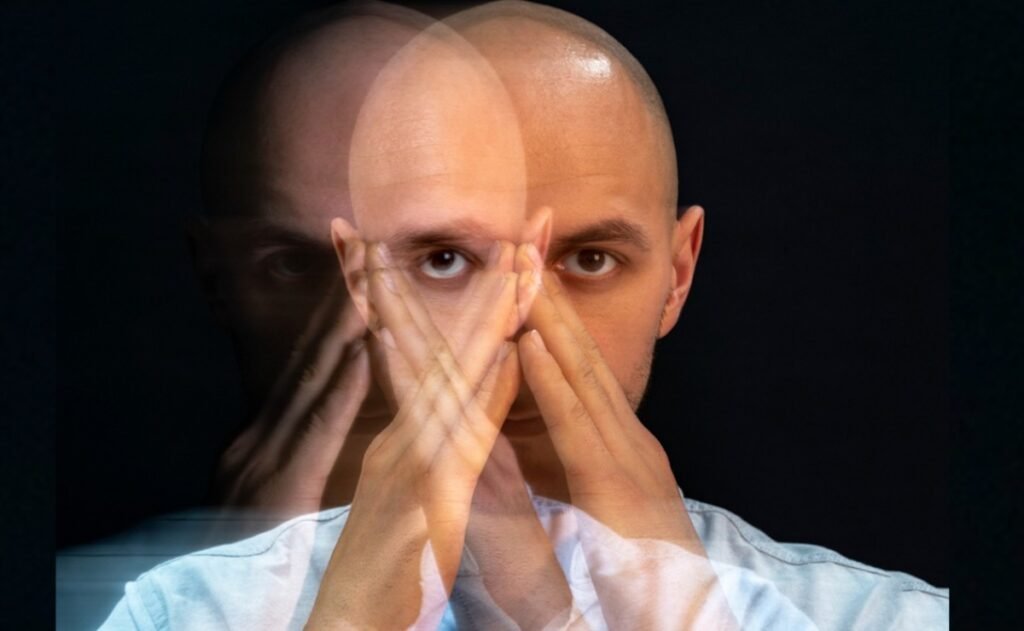Bipolar disorder causes extreme mood swings. Learn about its symptoms, clinical types, and how this chronic mental illness is diagnosed.
Bipolar disorder is a chronic mental illness characterized by extreme mood swings, ranging from episodes of mania to depression. Detecting its symptoms and understanding its different clinical forms is key to its treatment.
Bipolar disorder is a mental health condition that causes intense swings in emotional state, energy levels, and ability to perform daily activities. These fluctuations include phases of euphoria (mania or hypomania) and stages of profound sadness ( depression ), which significantly impact the social, work, and family lives of those who suffer from it.
Manic episodes can lead to impulsive behavior, racing thoughts, and sleep deprivation, while depressive episodes often include feelings of emptiness, extreme fatigue, social withdrawal, and even suicidal thoughts. These mood disturbances go beyond common emotional ups and downs and require specialized clinical care.
How bipolar disorder symptoms manifest
The signs of bipolar disorder vary depending on the type of episode the person is experiencing. During a manic phase, the most common symptoms are:
- Excessively high or irritable mood
- Increased physical and mental activity
- Decreased need for sleep
- Rapid speech and uncontrolled flow of ideas
- Difficulty concentrating
- Impulsive or risky behaviors, such as excessive spending or reckless decisions
In contrast, depressive episodes present signs such as:
- Persistent sadness or feeling of emptiness
- Loss of energy or constant fatigue
- Changes in appetite and sleep
- Lack of interest in daily activities
- Difficulty concentrating or making decisions
- Thoughts of death or suicide
In some cases, symptoms can combine in a single episode, known as a mixed episode. Recognizing these signs is essential for seeking professional support and obtaining a timely diagnosis.
Types of bipolar disorder: clinical differences
According to the Diagnostic and Statistical Manual of Mental Disorders (DSM-5), bipolar disorder is classified into three main categories:
Bipolar Disorder Type I: Characterized by severe manic episodes that may require hospitalization and last at least seven days. They may be accompanied by depressive phases.
Bipolar Disorder Type II: Includes at least one episode of hypomania (a milder form of mania) and one or more episodes of major depression. Although less disruptive than mania, hypomania can also interfere with daily routines.
Cyclothymic disorder or cyclothymia: This involves persistent mood swings lasting at least two years (one year in minors), with mild symptoms of hypomania and depression that do not meet full diagnostic criteria.
Accurately identifying the type of bipolar disorder is essential for designing an appropriate and personalized treatment plan.
Diagnosing bipolar disorder: How is it confirmed?
There is no specific laboratory test to detect bipolar disorder. Diagnosis is made by a mental health professional, usually a psychiatrist, through a comprehensive clinical evaluation. This includes:
- Personal and family interviews
- Analysis of medical and psychiatric history
- Mental health questionnaires
Rule out other possible causes such as endocrine disorders, substance use, or unipolar depression
The duration, intensity, and frequency of emotional episodes, along with genetic background, are key determinants in the diagnostic process.
Bipolar disorder treatment: Keys to a stable life
Although it is a chronic illness, bipolar disorder can be effectively managed with a comprehensive therapeutic approach. Treatment often includes:
- Mood-stabilizing medications, such as lithium, antipsychotics, and, in some cases, antidepressants, are always under medical prescription.
- Psychotherapy, especially cognitive behavioral therapy (CBT) and psychoeducation, helps patients identify symptoms, reduce relapse, and maintain a healthy routine.
- Family and social support, accompanied by good habits such as maintaining regular sleep schedules, avoiding drugs or alcohol, and reducing stress.
With early intervention and appropriate treatment, people with bipolar disorder can lead functional and rewarding lives.

